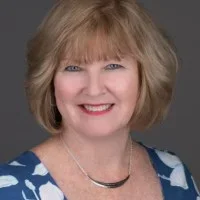Fannie Mae
Wondering who is this Fannie Mae person that your real estate agent always mentions when the subject about mortgage is brought up?
Fannie Mae is not a person, nor a Woody Allen female character – but the way people commonly refer to The Federal National Mortgage Association (FNMA).
But, to be fair, although it is not a person, to better understand Fannie Mae definition we need to tell its story as if we were telling a person’s life:
Fannie Mae was founded as a government-sponsored enterprise in 1938 as part of Franklin Delano Roosevelt administration’s “New Deal” on the aftermath of the Great Depression. The idea behind Fannie Mae was to inject federal money into privately owned banks to finance home mortgages and raise the levels of home ownership after so many Americans had their homes foreclosed on due to defaulting because of the economical crisis. Fannie Mae was an aggressive second mortgage market supporter that connected their financial injection with the obligation of buying Federal Housing Administration (FHA) insurance. So much so, it basically held a second mortgage monopoly for over 30 years.
But with the economy re-established, The Federal National Mortgage Association has been through a lot of changes. It became a mixed-ownership corporation in the 1950s and eventually turned into a government-sponsored, publicly traded and privately held corporation spawning Ginnie Mae (Government National Mortgage Association) and the privately held corporation that kept the “Fannie Mae” name without the “Federal National Mortgage Association”.
Yes, it’s like a family, right? You have Fannie Mae, younger sister Ginnie Mae and love interest on that love-hate relationship Freddie Mac. The name of this sitcom? “The Mortgages”?
Real Estate Tips:
Find a local real estate agent to advise you on the best type of mortgage to your specific home.
Popular Mortgage Terms
The assumption of a mortgage, with permission of the lender, from a borrower unable to continue making the payments. ...
The definition of a reverse mortgage is important for homeowners 62 and older who want to supplement their retirement income. What exactly is a reverse mortgage? Some say that it is the ...
A contribution to a borrower's down payment or settlement costs made by a home seller, as an alternative to a price reduction. ...
Deceptive practices used by mortgage loan providers and other participants in the mortgage process. Scams by Loan Providers: Lenders and mortgage brokers may employ a number of tricks ...
In connection with a home, the value of the home less the balance of outstanding mortgage loans on the home. ...
Compiling and maintaining the file of information about the transaction, including the credit report, appraisal, verification of employment and assets, and so on. Mortgage brokers usually ...
The amount the borrower promises to repay, as set forth in the loan contract. The loan amount may exceed the original amount requested by the borrower if he or she elects to include ...
If you’re a student in medical school, a resident or a medically qualified doctor, you must know the definition of Physicians Mortgage Loan, also known as Doctor Loans. Why? Because, ...
A documentation rule where the borrower discloses income and its source but the lender does not verify the amount. ...

Have a question or comment?
We're here to help.